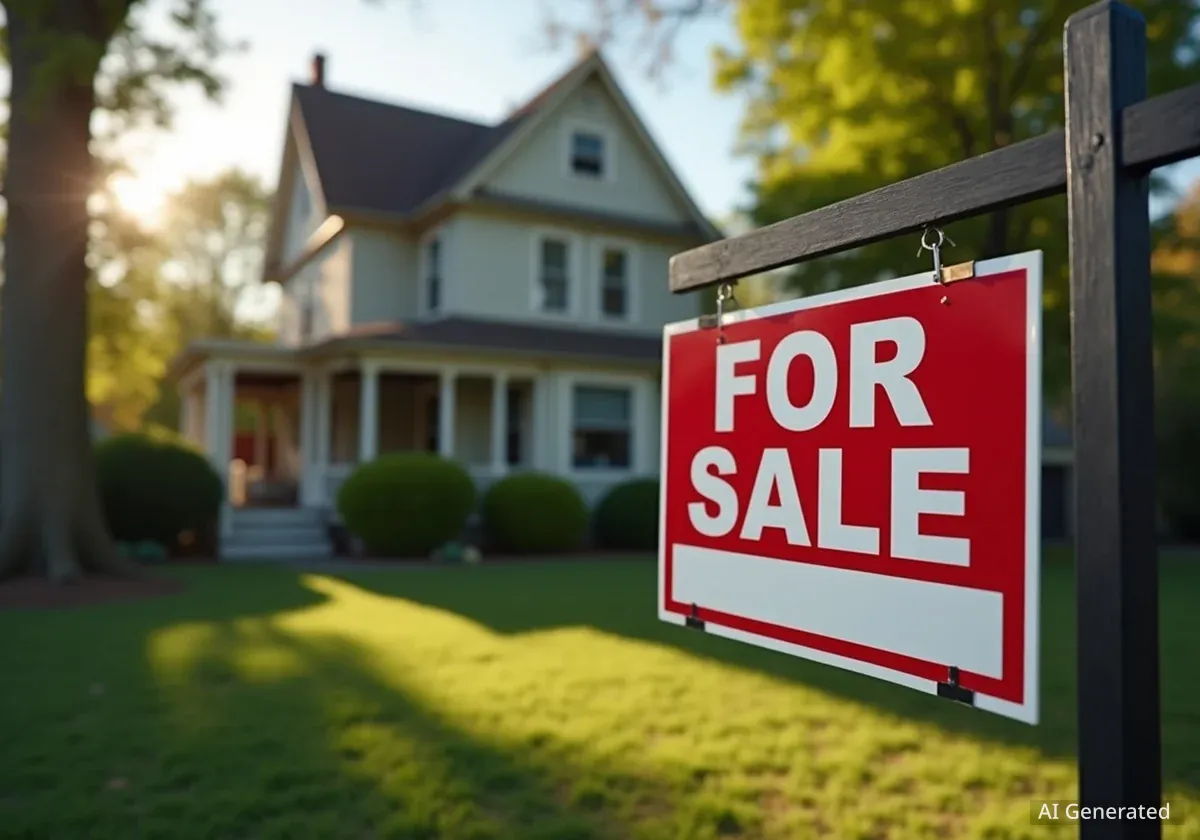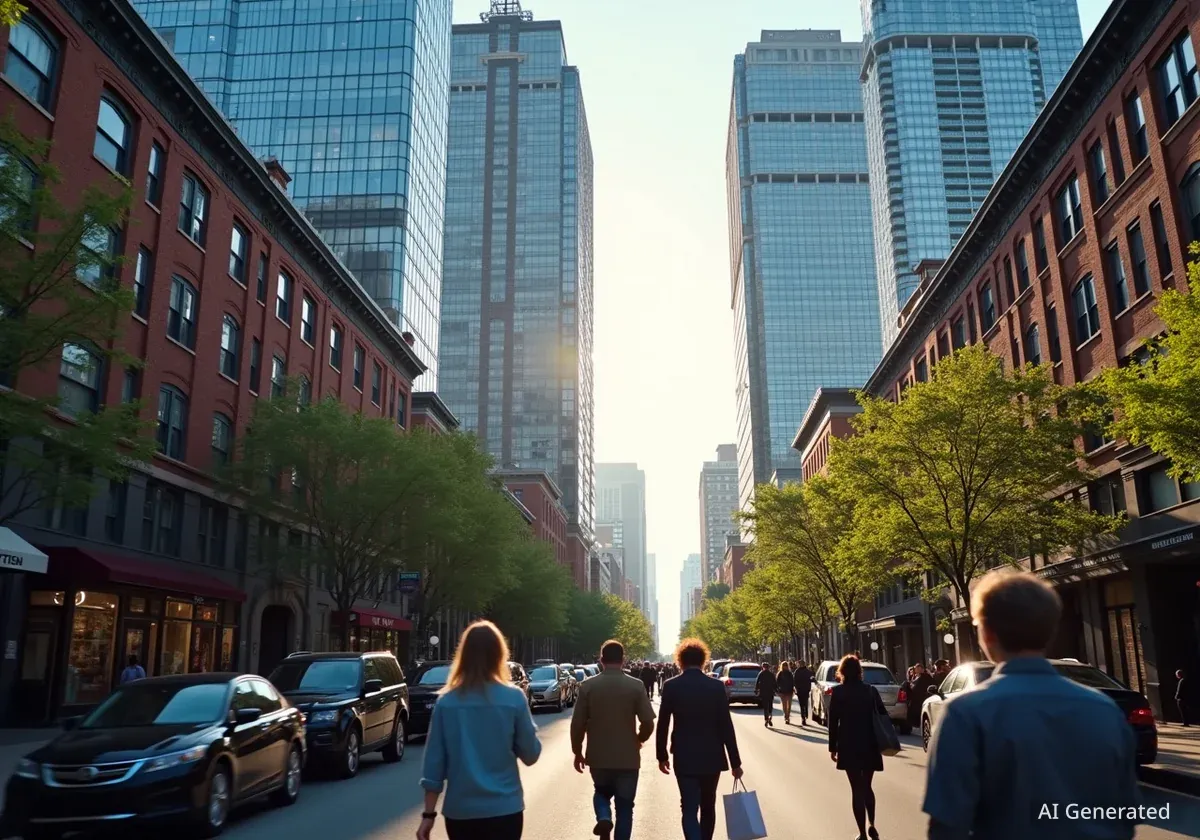In Chicago's rapidly changing Logan Square neighborhood, one homeowner has taken an innovative step to combat rising housing costs. By partnering with a community land trust, they are ensuring that new, permanently affordable housing units will be created, offering a potential model for other residents concerned about displacement.
This decision comes as Logan Square experiences significant gentrification, with soaring property values making it difficult for many long-term residents to remain in the community. The homeowner's action directly addresses this pressure by utilizing a legal structure designed to preserve affordability for generations.
Key Takeaways
- A homeowner in Logan Square is working with the Here to Stay Community Land Trust to develop new affordable housing.
- The neighborhood is a focal point of Chicago's gentrification, with housing costs rising sharply over the past decade.
- Community Land Trusts (CLTs) are a model where a nonprofit owns the land to keep the homes built on it permanently affordable.
- This approach offers an alternative to traditional real estate development, prioritizing community stability over market-rate profits.
A Direct Response to Neighborhood Change
The core of this initiative is a collaboration with the Here to Stay Community Land Trust, a nonprofit organization focused on creating and preserving affordable housing in Logan Square and nearby Hermosa. Instead of selling their property on the open market, which would likely lead to the construction of luxury housing, the owner chose a path that guarantees community benefit.
This move is particularly significant in Logan Square, a community that has seen dramatic demographic and economic shifts. Rising rents and property taxes have put immense pressure on working-class families and individuals who have lived in the area for years.
Understanding Logan Square's Housing Market
According to data from the DePaul Institute for Housing Studies, parts of Logan Square have experienced some of the highest rates of property value appreciation in Chicago. This trend has fueled concerns about the displacement of historic communities, particularly Latino families who have long called the neighborhood home.
The homeowner's decision provides a tangible solution. By placing the property into the land trust, they are effectively removing it from the speculative real estate market. This ensures that any new development on the site will be bound by affordability restrictions in perpetuity.
How Community Land Trusts Create Affordability
The Community Land Trust (CLT) model is a powerful but often misunderstood tool for housing stability. Its primary function is to separate the ownership of land from the ownership of the buildings on that land.
Here is a simplified breakdown of how it works:
- Land Acquisition: The CLT, a nonprofit organization, acquires a parcel of land through purchase or donation.
- Home Ownership: The CLT then sells or develops homes on that land to low- or moderate-income buyers.
- Ground Lease: The buyer purchases the house itself but enters into a long-term, renewable ground lease for the land underneath it. This lease typically lasts for 99 years.
- Resale Formula: The ground lease includes a resale formula that limits the price at which the owner can sell the home in the future. This ensures the home remains affordable for the next income-qualified buyer.
By removing the cost of the land from the home's purchase price, the initial sale becomes significantly more affordable. The resale restrictions prevent the home from being sold at a high market rate, preserving its affordability for subsequent generations.
A Growing National Movement
There are now over 225 Community Land Trusts operating in the United States. This model has gained popularity in cities with intense housing market pressures, including Burlington, Vermont; Durham, North Carolina; and now, Chicago.
The Mission of Here to Stay
The Here to Stay Community Land Trust was specifically formed to address the displacement crisis in Logan Square and its surrounding communities. The organization is a community-led effort, with a board composed of residents and local stakeholders who understand the neighborhood's needs.
The trust's mission is rooted in the belief that development should benefit existing residents rather than push them out. By acquiring properties like the one in this recent initiative, Here to Stay is building a portfolio of land that will serve as a permanent community asset.
"Our goal is to give the community control over its own land and housing," is a central theme often expressed by CLT advocates. "When the community owns the land, it can ensure that development meets the needs of residents, not just outside investors."
This project in Logan Square is a prime example of their model in action. It transforms a single property into a long-term resource for affordable housing, creating a small but important bulwark against market forces that have displaced many.
A Model for Other Chicago Neighborhoods
While this single project will not solve Chicago's entire affordable housing crisis, it serves as a powerful proof of concept. It demonstrates that individual homeowners have options beyond simply selling to the highest bidder. For property owners concerned about the future of their communities, the CLT model offers a way to leave a legacy of stability and affordability.
This approach could be replicated in other Chicago neighborhoods facing similar gentrification pressures, such as Pilsen, Humboldt Park, and Woodlawn. Success often depends on several factors:
- Community Awareness: Educating homeowners and residents about how CLTs work.
- Organizational Capacity: The presence of a strong, well-run CLT like Here to Stay.
- Municipal Support: Cooperation from city government in the form of funding, zoning assistance, and the transfer of publicly owned land.
As cities across the country grapple with housing shortages, community-driven solutions like the land trust model are gaining attention. The action of one Logan Square homeowner highlights a path forward that prioritizes people and community over pure profit, offering a small but meaningful victory in the fight for affordable urban living.





